 |
|||||||||
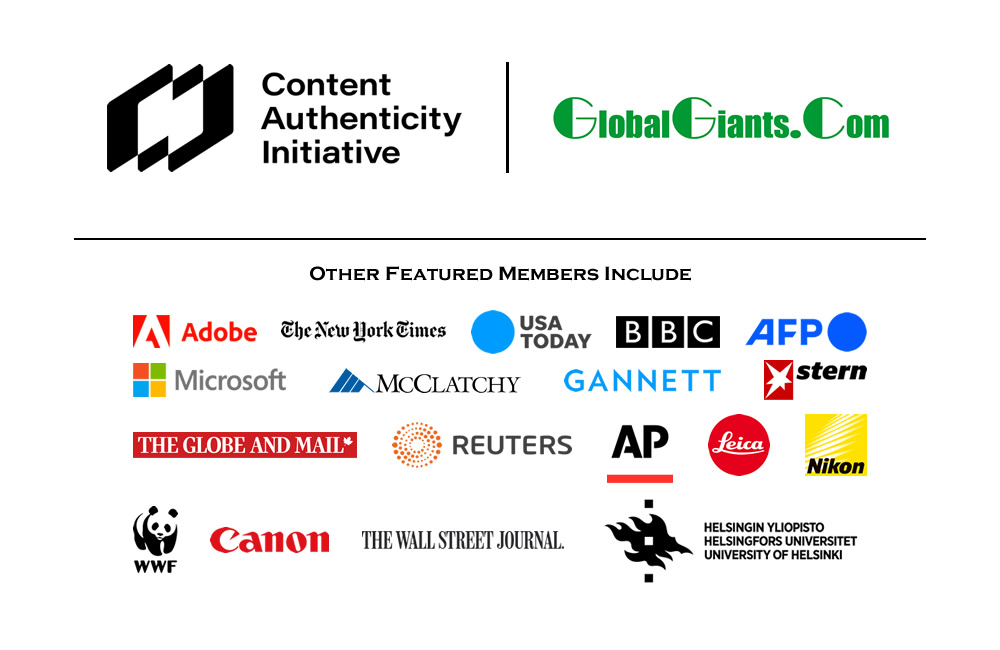



 |
|||||||||




• Universities need to do a better job of cooperating with the corporate world to better prepare students for their careers.
• Young workers are changing companies, forcing companies to adapt.
• An MBA should be carefully considered, as it is not always beneficial.
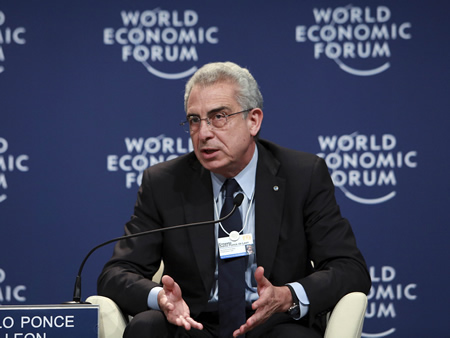
Photo: Ernesto Zedillo Ponce de Leon, Director, Yale Center for the Study of Globalization, Yale University, USA; World Economic Forum Foundation Board Member; Global Agenda Council on Institutional Governance Systems at the Annual Meeting of the New Champions in Tianjin, China 2012 (© World Economic Forum).
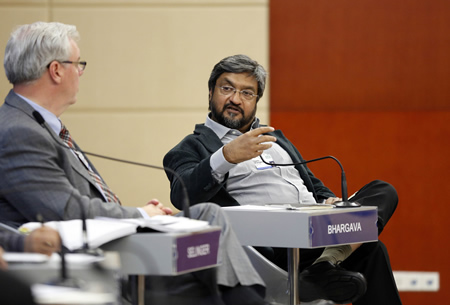
Photo: Rajeev Bhargava, Director and Senior Fellow, Centre for the Study of Developing Societies, University of Delhi, India, at the Annual Meeting of the New Champions in Tianjin, China 2012 (© World Economic Forum).
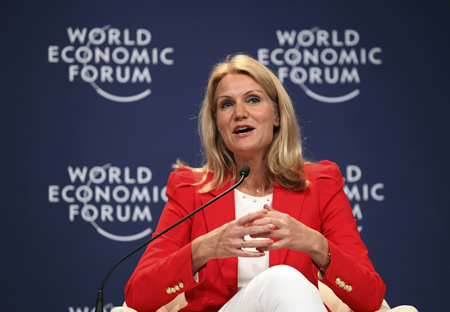
Photo: Helle Thorning-Schmidt, Prime Minister of Denmark at the Annual Meeting of the New Champions in Tianjin, China 2012 (© World Economic Forum).
As the labour market rapidly changes, universities need to play a stronger role in preparing graduates for life in the workplace, according to a panel on talent development on the second day of the World Economic Forum’s Annual Meeting of New Champions 2012 at Tianjin, People’s Republic of China, 12 September 2012.
“There is a mismatch between where talent is and where it’s needed,” Mark Du Ree, Regional Head, Japan and Asia, and Member of the Executive Committee, Adecco Group, Japan, told participants. “We have very good students who have a great academic career, but we seem to have a disconnect between what’s needed in a corporation and the skills brought to the table.”
N. V. (Tiger) Tyagarajan, President and Chief Executive Officer, Genpact, India, agreed that training the next generation of workers to cope in fast-paced and quickly changing environments is key. He said graduates frequently lack the skills necessary to succeed.
Du Ree added that some universities employ professors or instructors from the corporate world, but many are staffed solely by academics. “What we need to do is have more corporate cooperation with the academics,” he said, noting that young people need to be better prepared. “How can we get academics to spend time in the real world - in the working world - so they know what they’re talking about?” he asked.
Matching talent with demand is another challenge. Ronald Bruder, Founder and Chair, Education For Employment (EFE), USA, a Social Entrepreneur, said that his organization works with employers to find and train talent that meets their needs.
Kevin Taylor, President, Asia-Pacific, BT, Hong Kong SAR, said young workers are also changing the nature of companies. He said young workers are not interested in working seven days a week, or staying up into the early hours of the morning to get their work done. His company has 20,000 employees working from home in the United Kingdom alone. “It’s great,” he said. “The desktop is dead.” He said workers now get their work done anywhere, at any time. According to Taylor, the future will not be how young workers adapt to companies, but how companies can adapt to the working habits and ideals of young workers.
The panellists also tended to agree that an MBA is not as useful as it is perceived to be. Taylor encouraged new graduates to get job experience first, and then pursue an MBA later if it aligns with their career aspirations. Du Ree said he originally planned to pursue his MBA, but, “after working for a few years and finding my passion, I realized I didn’t need it anymore.”
|GlobalGiants.Com|
Edited & Posted by the Editor | 8:38 AM | View the original post

QS has announced its 2012 World University Rankings by Subject, the largest set of rankings of its kind ever compiled.
MIT and Harvard both top the table in 11 of the record 29 disciplines covered, ahead of Oxford (3), Stanford (3) and Cambridge (1). Yet it is the performance of universities outside of the traditional US-UK elite that provides the rankings’ main talking point.
Universities from 17 different countries make the top 20 in at least one discipline, spanning five continents: the US, UK, Australia, Canada, Switzerland, Italy, France, Germany, Netherlands, Ireland, Sweden, China, Singapore, Hong Kong, Korea, Japan and Brazil.
Asia accounts for around a quarter of leading institutions in engineering, mathematics, chemistry, and material sciences. University of Tokyo ranks 2nd in civil engineering, while National University of Singapore, Peking University, Hong Kong University and Kyoto University all make the top ten in at least one discipline.
“Global competition to develop research capacity and attract international talent is shaking up the established order”, says QS head of research Ben Sowter. “The financial crisis has eroded the ability of leading universities in the US and UK to monopolize world-class researchers and students”.
Continental Europe’s leading institution is ETH Zurich, ranked 4th in chemical engineering. Germany’s increased research funding through the Excellence Initiative is reflected in strong performances in science and technology, with Ludwig-Maximilians-Universitat Muenchen ranked 12th for physics.
“Countries in Asia, Australasia and parts of western Europe have increased their research budgets in a bid to foster innovation,” says John O’Leary. “The BRIC nations in particular have made higher education central to their plans for economic growth.”
Two Indian institutions (Indian Institutes of Technology) appear for the first time in the top 30 for engineering, while China flexes its muscle with top-30 rankings in 17 disciplines. Brazil’s emergence is reflected by top-50 rankings in six subjects for the University of Sao Paolo.
Australian universities make the top ten in 11 subjects, while Toronto University is Canada’s top institution, with five top-ten rankings. 12 UK institutions make the top 20 in at least one of the 29 subjects, though only three of these universities register their best performance in a science or technology discipline.
QS World University Rankings by Subject is based on new data on research citations alongside global surveys of nearly 50,000 academics and graduate employers.
Source: QS Quacquarelli Symonds
|GlobalGiants.Com|
Edited & Posted by the Editor | 2:01 AM | View the original post
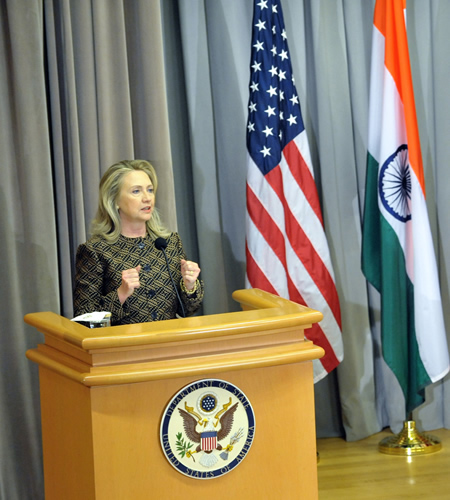
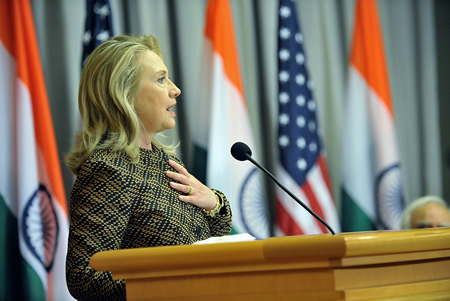
Photos: U.S. Secretary of State Hillary Rodham Clinton delivers remarks at the U.S.-India Higher Education Summit at the George C. Marshall Center in Washington, D.C. on June 12, 2012 (State Department Photos).
In a milestone in the educational partnership between India and the United States, the U.S. Department of State today announced the eight institutional partnership projects below for the first “Obama-Singh 21st Century Knowledge Initiative Awards”. The goal of the initiative is to further strengthen, through faculty exchanges, joint research, and other collaboration, partnerships between American and Indian institutions of higher education in priority fields, including food security, climate change, sustainable energy, and public health. Each project will receive an award that can be utilized over the three-year grant period.
U.S.-led Partnerships:
• Rutgers, The State University of New Jersey
Project Title: Capitalizing on the Demographic Dividend: Enhancing Talent Development Capacity for India and the U.S. in the 21st Century
Partner Institution: Tata Institute of Social Sciences, Mumbai
• University of Montana
Project Title: Impacts of Climate Change and Changes in Socio-Economic Structure on Traditional Agriculture and the Development of Sustainable Communities among Indigenous Populations
Partner Institution: Bangalore University
• Cornell University
Project Title: Implementing Reformed Curriculum in Emerging areas of Agriculture and Food Security in Two State Agricultural Universities of India
Partner Institutions: University of Agricultural Sciences, Dharwad; and Sardar Vallabh Bhai Patel University of Agriculture and Technology, Meerut
• University of Michigan
Project Title: The Joint Development of a Master’s Degree in Education for Health Professions Faculty in the United States and India
Partner Institution: Maharashtra University of the Health Sciences
Indian-led Partnerships:
• Mahatma Gandhi University
Project Title: An Interdisciplinary and Community Oriented Approach toward Sustainable Development
Partner Institutions: Brown University, Duke University and Plymouth State University
• Banaras Hindu University
Project Title: Paradigm Shift in Energy Scenario for the 21st Century toward Renewable Energy Sources required for both India and the U.S.
Partner Institution: University of Pittsburgh
• Indian Institute of Technology, Kanpur
Project Title: International Program for Sustainable Infrastructure Development
Partner Institution: Virginia Tech University
• Indian Institute of Technology, Delhi
Project Title: Resource Building for Ecosystem and Human Health Risk Assessment with Special reference to Microbial Contamination
Partner Institution: Drexel University
Prime Minister Manmohan Singh and President Barack Obama announced the Obama-Singh Initiative in November 2009 as an affirmation of their commitment to building an enhanced India-U.S. partnership in education.
To implement this initiative, the Governments of India and the United States established a bi-national Obama-Singh Initiative joint working group (JWG). The JWG provides the final approval for all grants awarded through the Obama-Singh Initiative.
• The “Proposal Submission Instructions” and the “Open Competition” for the next round of the Obama-Singh Initiative grants will be announced in July 2012 by University Grants Commission (UGC), Bahadur Shah Zafar Marg, New Delhi 110002, India.
|GlobalGiants.Com|
• UPDATE - 1
University Grants Commission (UGC), India, has invited applications for Post Doctoral Fellowships for Indian Scholars in United States for 2012 under Obama-Singh 21st Century Knowledge Initiative 2012.
Objective: The objective of the Fellowships is to provide the Indian scholars an opportunity to have international collaborative research opportunities and training in advanced techniques and technologies in emerging fields, thereby furthering their research capacity and ability to contribute to higher education with global perspective and forging long-term relationships with distinguished experts in these fields in USA. These fellowships would be called Post Doctoral Fellowships for the year 2012 to be awarded by University Grants Commission, India.
Number of Fellowships: 300
Important Date: The application must be submitted in the ‘online mode’ latest by July 11, 2012.
• [According to a communication from SECRETARY, UGC, the last date to apply has been extended to 18th August, 2012.]
Eligibility Criteria:
• The applicant should be a permanent teacher in a university/institution recognized by UGC under 2(f) and 12B of UGC Act.
• The applicant should possess at least 60% marks or equivalent in the post-graduate degree.
• The applicant should possess a PhD degree in respective academic discipline (Humanities, Social Sciences, Natural Science, Engineering, Technology, Agricultural Sciences) or MD/MS/PhD in Medical Sciences.
• UPDATE - 2
Aiming to improve the quality of education across all colleges and universities, India will soon come up with a regulation that will inform students about their academic rights and entitlements.
• According to the University Grants Commission, or UGC - the apex regulatory body for universities in India - it is working on a Students’ Entitlement Regulation. The regulation will apply to public and private universities alike.
The regulation will specify the academic rights of students, such as the minimum number of lectures to be held, access to quality laboratories, the presence of adequate books and reference material in university libraries, and sporting and accommodation facilities, among other areas.
The UGC also plans to create a portal where students can post shortcomings of their campuses and provide a real picture of different campuses in terms of academic matters.
According to the UGC chair, Professor Ved Prakash, students must have complete knowledge about their rights relating to learning, the living environment, physical activities, entertainment and sports facilities. “Once the regulation comes into effect, a student can complain if any specific right or entitlement is being violated,” Professor Prakash said.
• UPDATE - 3
US-India Institutional Partnership Grants
The United States-India Educational Foundation (USIEF) has announced an open competition for the support of projects through the Obama-Singh 21st Century Knowledge Initiative (OSI). OSI aims to strengthen collaboration and build partnerships between American and Indian institutions of higher education.
• Accredited US post-secondary educational institutions meeting the provisions described in Internal Revenue Code section 26 U.S.C. 501©(3) may submit proposals to support the program’s goals of encouraging mutual understanding, facilitating educational reform, fostering economic development, and engaging civil society through academic cooperation with Indian post secondary educational institutions.
Submission Deadline: November 1, 2012.
Exchange activities may include but are not limited to curriculum design, research collaboration, team teaching, focused series of exchanges, seminars, among other activities. Activities should be designed to develop expertise, advance scholarship and teaching, and promote reliable, long-term communication between partner institutions.
• Proposals in the following fields are eligible: Energy; Sustainable Development; Climate Change; Environmental Studies; Education and Educational Reform; Public Health; and Community Development and Innovation.
• UPDATE - 4
English language weekly magazine INDIA TODAY has ranked India’s top 50 universities, out of a total 160 surveyed.
Edited & Posted by the Editor | 6:34 AM | View the original post


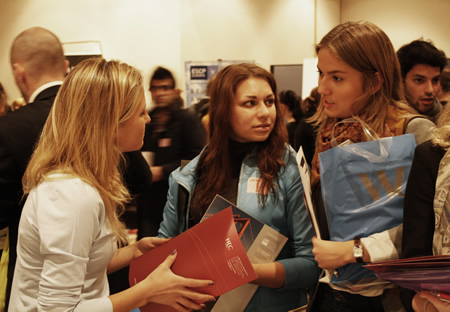
Photo © QS Quacquarelli Symonds.
Europe outshines the US in a new ranking of the world’s best cities for students, released for the first time today by the research specialist behind the annual QS World University Rankings(R).
Paris tops the table ahead of London, Boston and Melbourne, with six European cities in the top ten. Singapore (12th) is the leading Asian city ahead of Hong Kong (19=) and Tokyo (19=), while Australia is the only country with two cities in the top ten.
• Based on 12 criteria, QS Best Student Cities 2012 takes into account the quality and number of internationally ranked universities, alongside factors such as affordability, quality of living and the reputation of local universities among employers.
Europe triumphs on quality of living and affordability, with tuition fees in top-ten cities Paris, Vienna, Zurich and Berlin averaging under US$1,000 per year, compared to $30,000 in the US. Twenty European cities make the top 50 compared to nine each from North America and Asia and four from Latin America.
London claims the top score for the quality of its leading universities, but Paris has a greater number of internationally ranked institutions alongside superior all-round scores.


Edouard Husson, Vice-Chancellor of Paris universities: “This research recognizes the world-class study experience provided by Paris. We have more globally ranked universities than any other city, alongside low tuition fees. Moreover, Paris has four “universities of excellence” as a result of the IDEX competition.”
London Mayor Boris Johnson: “I’m delighted to learn that London has once again been confirmed as one of the best places on earth to be a student. With over 400,000 students and more top ranked universities than any other capital, London is a great student’s city. With the Olympic Games just around the corner, London is undergoing an enormous transformation. Moreover, we’ve got twice as many book shops as New York, and more museums than Paris. And by the way, our museums are free.”
Source: QS Quacquarelli Symonds
|GlobalGiants.Com|
Edited & Posted by the Editor | 5:47 AM | View the original post
• IBM Teams with 500 Universities in India in First-of-a-Kind Faculty Development Program.
• Students in China, India, Northern Ireland and Scotland Studying How Analytics Applies to Industries.

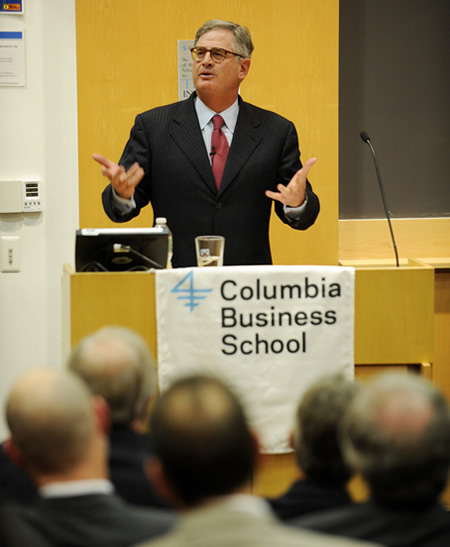
Photo: On Nov. 2, 2011 at Columbia University in New York City, IBM Chairman and CEO Samuel J. Palmisano discusses the lessons IBM learned over its past 100 years, in a speech commemorating the company’s Centennial.
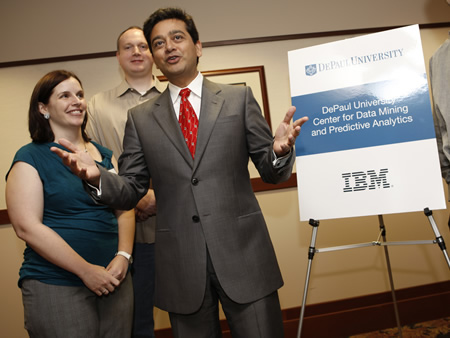
Photo: In collaboration with DePaul University, Deepak Advani, right, VP of Predictive Analytics at IBM, unveils the Center for Data Mining and Predictive Analytics, with graduate students Mary Jo Zefeldt, left, and Jonathan Gemmel, in Chicago.
• To address a growing market demand for analytics savvy graduates, IBM is working with universities around the world to bring advanced analytics training directly into the classroom. The company is expanding its academic initiatives for business analytics with new programs in China, India, Ireland and Scotland, helping students keep pace with today’s competitive job market by gaining skills in this fast-growing field of technology.
Everyday people create the equivalent of 2.5 quintillion bytes of data from sensors, mobile devices, online transactions, and social networks; so much that 90 percent of the world’s data has been generated in the past two years. This amounts to more data than organizations can effectively use without applying analytics. The new programs are providing students and faculty members, regardless of their course of study, with access to the latest software capabilities and thinking on how advanced analytics can be applied to tackle complex business and societal challenges.

Photo: Members of the University of Central Florida’s Institute for Advanced Systems Engineering gain hands-on experience with IBM’s most popular systems engineering software as they prepare for careers creating the smart cities, healthcare systems and advanced products and systems of the future.

Photo: TOP: In 1986, IBM scientists Heinrich Rohrer (left) and Gerd Binnig (right) of IBM’s Zurich Research Laboratory were awarded the Nobel Prize in Physics for their invention of the scanning tunneling microscope. (Image courtesy of IBM Research) BOTTOM: In its centennial year, IBM is looking to the future at the opening of a new nanotechnology research center in Zurich, Switzerland on May 17, 2011. IBM Fellows and Nobel Laureates Drs. Gerd Binnig (left) and Heinrich Rohrer (right), whose pioneering work paved the way for the study of nanoscience, join IBM Research Senior Vice President Dr. John Kelly III to inaugurate the center, a joint collaboration with university partner — ETH Zurich (Swiss Federal Institute of Technology, Zurich) — an engineering, science, technology, mathematics and management university in the city of Zurich, Switzerland.
According to the 2010 IBM Institute for Business Value and MIT Sloan Management Review study of nearly 3,000 executives worldwide, the biggest challenge is the lack of understanding in how to use analytics to gain insights that can improve business outcomes. In response to market demand, universities are incorporating analytics curricula and courseware into a variety of degree programs to educate college students in this growing field.
• In India, IBM is working with faculty members from 500 universities to help more than 30,000 students develop skills in predictive analytics. As part of the program, IBM will conduct a series of training programs with business school faculty concentrating on predictive and business analytics, in 15 major cities throughout the country of India. The faculty members will complete a certification process in analytics at the end of the program.
Once certified they will begin to teach students about how analytics can be applied to their topic of study. The learning will involve access to predictive analytics technology and will focus on how to act on the results the analytics technology uncovers.
“I have been using IBM predictive analytics technology in a number of programs at Indian Institute of Management Calcutta,” said Sahadeb Sarkar, Professor, Operations Management Group, Indian Institute of Management, Calcutta (IIM). “I hope this initiative will help teachers in universities to learn and include analytics in existing courses and design new curriculum that will help students gain a top-notch education to meet the demands of today’s businesses and government organizations.”
These universities join schools around the world including Northwestern University, Yale School of Management, Fordham University, DePaul University, University of Southern California and University of Ottawa Telfer School of Management, that are working with IBM to develop and implement undergraduate and graduate curriculum and training on business analytics.
“Through IBM’s Academic Initiative, universities are adding analytics to their course offerings, establishing new degree programs and now we are seeing an acceleration in global demand for training in analytics,” said Jim Corgel, general manager of IBM’s Academic Initiative.
According to IBM, through its Academic Initiative, it is making its software, courseware and curricula available to nearly 6,000 universities and more than 30,000 faculty to advance technology skills.
|GlobalGiants.Com|
Edited & Posted by the Editor | 11:00 AM | View the original post


Photo: IBM Chairman and CEO, Samuel J. Palmisano, addresses Chile’s most forward-thinking leaders - governors, mayors, urban experts from academia and community leaders - at the Smarter Cities forum in Santiago, Chile, November 23, 2010. Palmisano underscored the passion and momentum that exists across cities in Chile in support of urban transformation. (Graham Carlow/Feature Photo Service)

Photo: In New York City, Michael Bloomberg, Mayor, City of New York, spoke to 700 leaders from world government, business, academia and science at IBM’s THINK Forum held at Lincoln Center, Tuesday, September 20, 2011. As part of IBM’s 100-year anniversary, the forum examined the implications of leadership on organizations and societies and the deep structural changes required to drive progress. (Feature Photo Service)

Photo: Global Parking Survey — To better understand consumer attitudes around the daily struggles that drivers face in finding a parking spot and traffic congestion, IBM conducted the 2011 global parking survey. The IBM Parking Index looks at issues such as longest amount of time spent looking for a parking spot, inability to find parking, arguments with fellow motorists over parking and more to rank parking difficulty in 20 international cities. From left to right, cities are plotted from the most difficult parking issues (New Delhi) to the least difficult (Chicago). (Feature Photo Service)
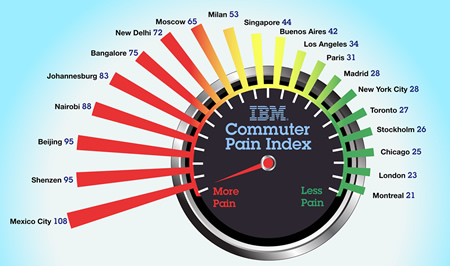
Photo: Global Commuter Pain Survey — Drivers in Mexico City have the most painful commute of the 20 cities in IBM’s 2011 Global Commuter Pain survey. Studying the emotional toll associated with driving, the annual survey reveals that, overall, commuters have gotten a lot more stressed out and angry in the past year. On the positive side, New York, Chicago and Los Angeles have less painful commutes when compared to most other cities. And Montreal has the least painful of all. (Foto IBM/Dennis Champlain)
In order to respond intelligently to the needs of their growing populations, city infrastructures that deliver vital services such as transportation, healthcare, education, public safety, energy and water, must rely on a wealth of new information and technologies.
IBM today announced that it has created a Smarter Cities Exploration Center in collaboration with the University of Guadalajara, Mexico.
The Center will design solutions to tackle infrastructure challenges faced by Guadalajara and other cities around the world.
Guadalajara is Mexico’s second largest city and the University of Guadalajara is an educational community with more than two hundred years of history.
According to IBM, the center has already started the development of a transportation pilot that could reduce commuting time in the city by 15%, representing approximately US$ 90 million in savings per year by enabling citizens to use their time more productively and decrease carbon emissions.
The company and the University will share knowledge through the exchange of intellectual property among doctoral students and researchers. The use of IBM’s data analytics, supercomputing and cloud computing capabilities would drive the development of new pilots and solutions, IBM said.
• Meanwhile, Meredith Hannon, IBM’s spokesperson at its headquarters in Armonk, New York, has explained to the GlobalGiants.Com Publisher that IBM does business with and works on a number of efforts with universities and diverse other academic institutions all around the globe. But the establishment of this Smarter Cities Exploration Center in Mexico is its first such collaboration with any university in the world.
|GlobalGiants.Com|
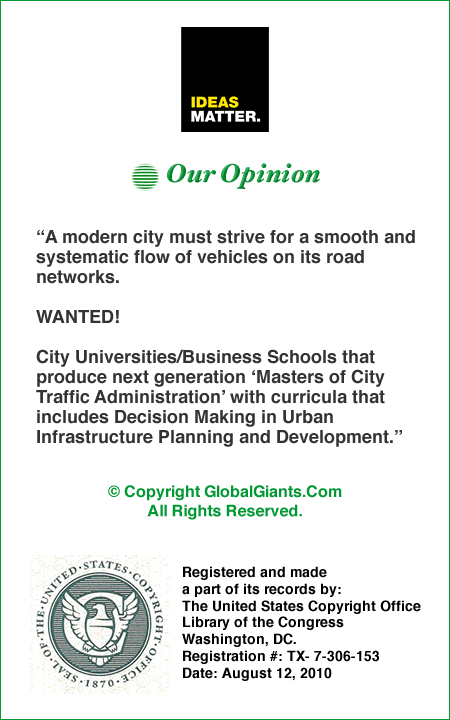
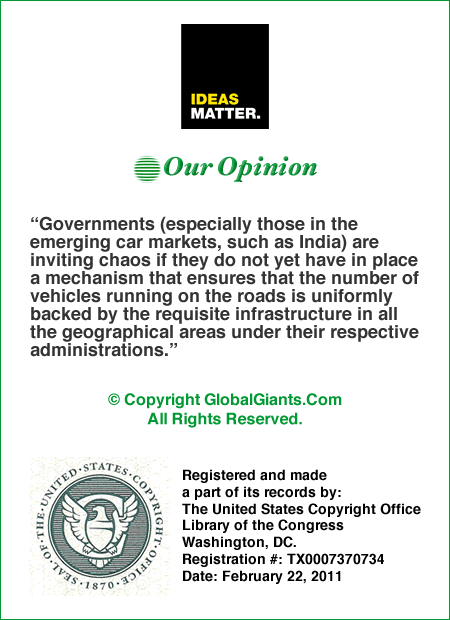
Edited & Posted by the Editor | 10:44 AM | View the original post
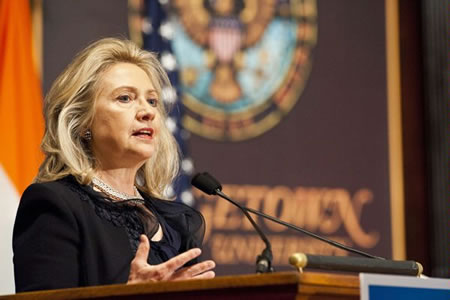
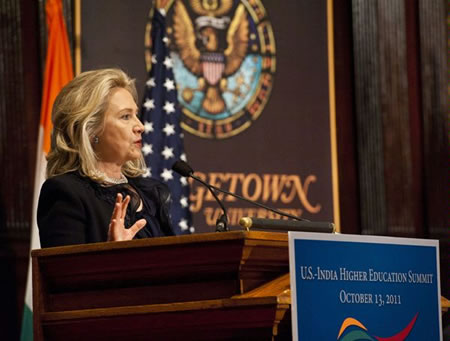
Photos: U.S. Secretary of State Hillary Rodham Clinton delivers remarks to the U.S.-India Higher Education Summit held at Georgetown University in Washington, DC. Photos Credit: Phil Humnicky/Georgetown University / October 13, 2011.
• The U.S.-India Higher Education Summit was held at Georgetown University in Washington, D.C. on Thursday, October 13. The Summit was jointly hosted by the Government of the United States and the Government of India and attended by 300 higher education leaders and government officials from the U.S. and India, as well as private sector leaders.
The objective of the summit was to further strengthen higher education collaboration and exchange between institutions in the United States and India through exploration of topics of mutual interest such as joint degrees, research partnerships, accreditation and quality assurance. In addition, the summit highlighted the importance of education as a pillar of the U.S.-India Strategic Dialogue and set forth goals for deepening this aspect of the bilateral relationship in cooperation with the many excellent institutions of higher education in both countries.
The summit featured a roundtable discussion on U.S.-India Higher Education Cooperation, co-chaired by Assistant Secretary Ann Stock and Indian Minister of Human Resource Development Kapil Sibal. Prominent higher education and thought leaders spoke at a plenary session and in breakout sessions on topics crucial to expanding and strengthening higher education collaboration between the two countries.
Minister Sibal thanked Secretary Clinton and her colleagues, as well as the academic, non-governmental, and business communities in the United States for their efforts in successfully organizing the U.S.-India Higher Education Summit, and expressed optimism about building on this successful Summit in the expanded U.S.-India Higher Education Dialogue to be held in 2012.
|GlobalGiants.Com|
Edited & Posted by the Editor | 5:04 AM | View the original post
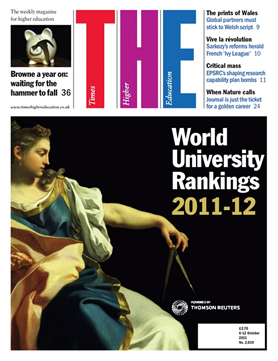
Times Higher Education World University Rankings, unveiled today, spring a surprise at the top, where Harvard University is dethroned by the California Institute of Technology. Caltech snatches first place thanks mainly to a 16 per cent rise in research funding.
• In terms of overall number of institutions in the top 200, the US leads the way with 75, followed by the UK (32), Germany (12), the Netherlands (12) and Canada (9).
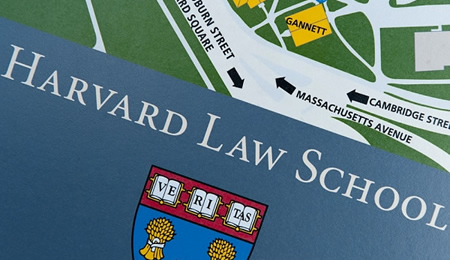
TOP 10 UNIVERSITIES
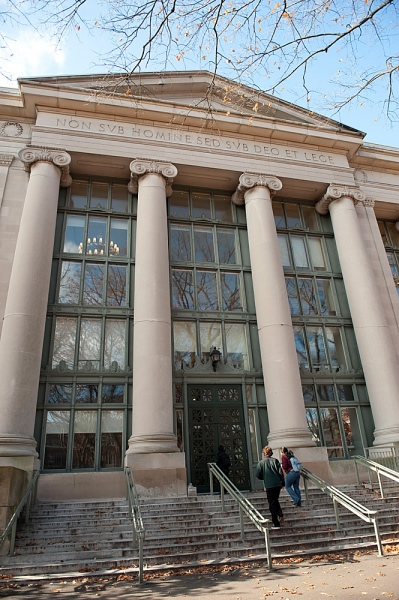
• According to John Morgan, deputy news editor at Times Higher Education, “Switzerland and the UK have the best-value higher education systems in the world while the US languishes in 16th place.”
“When the table is adjusted for national spending on higher education, Switzerland has the most universities in the top 200 per billion dollars spent, followed by the UK in second place and the Netherlands in third. The US finishes 16th by this measure (see graph below),” explains Morgan.
Critics of the higher education reforms in England, where the bulk of public funding is being replaced with private investment in the form of higher tuition fees, see the rankings as a warning against any shift to a market-driven US model.
Howard Hotson, professor of early modern intellectual history at the University of Oxford, who has become a prominent critic of his government’s higher education policy, said: “You can turn the data from the World University Rankings upside down and inside out…to measure different things; but the end results are more or less the same.
“Several small and prosperous countries - notably the Netherlands, Sweden and Denmark - do best in per capita terms; the UK comes at or near the top of the value-for-money table; and Switzerland does exceptionally well across the board.
“The US, by contrast, offers unimpressive performance in per capita terms and very poor value for money.” He added: “Although many of the world’s very best universities are private, all the world’s best university systems are public…All this puts a fresh onus on the UK minister for universities and science - and on his counterparts in other countries - to provide equally clear and compelling evidence to justify radical market-driven reforms.”

Many US public universities - notably those in California - have slipped in the rankings as funding falls amid state budget crises.
But Don Heller, professor of education and senior scientist at Pennsylvania State University, said it would “take a number of years of downturn” to damage the research reputation of US universities. “Most of the research funding in the US comes from the federal government. That hasn’t been cut and has gone up a bit, in comparison to general funding from the states.”
[The U.S. Department of Education has confirmed to the Publisher of GlobalGiants.Com that the U.S. federal government takes great interest in university research and directly provides a large amount of research funds to universities and colleges.]
• Bruce Johnstone, emeritus professor of higher and comparative education at the University at Buffalo, State University of New York, predicted that the US would remain globally dominant. “The bottom line is the US gives a tremendous amount of money to higher education because of the combination of taxpayer revenue, tuition revenue and philanthropic revenue,” he said. Professor Johnstone highlighted philanthropy as an income source not available to competitor nations.
|GlobalGiants.Com|

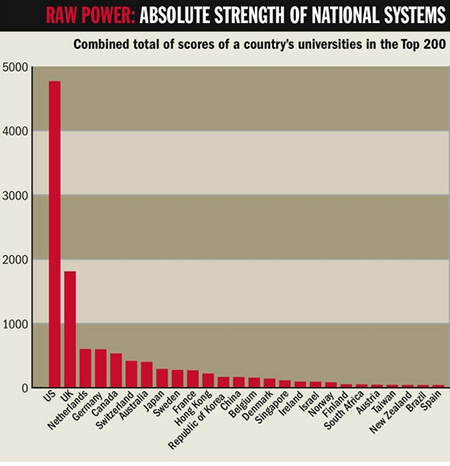
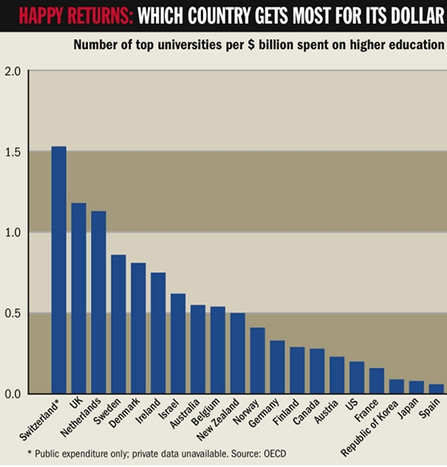
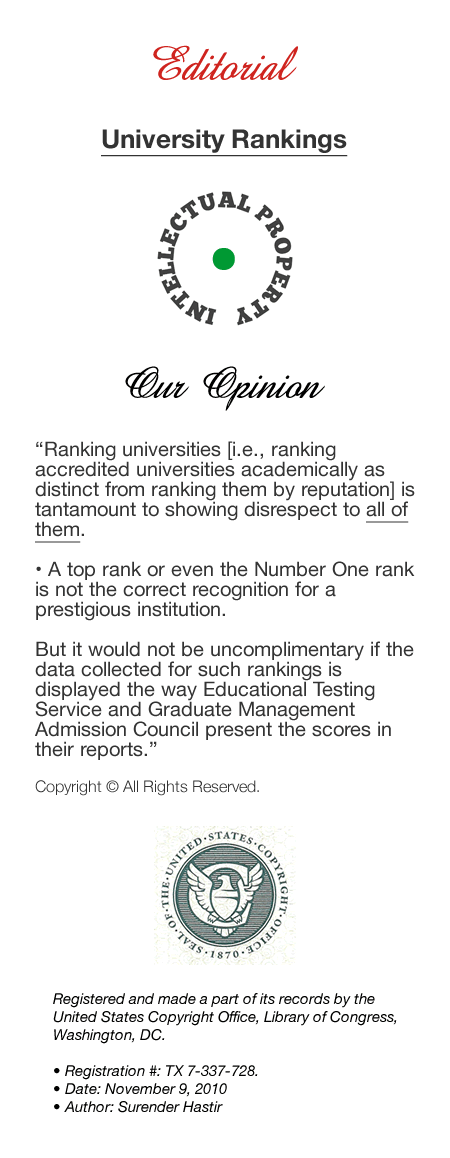
Edited & Posted by the Editor | 12:20 PM | View the original post

Photo: Buddhist Master and Harvard Ph.D. Trungram Gyaltrul Rinpoche examines the proportions of a hand-made copper Buddha statue as the artist constructs it. World Center for Peace and Unity, a large Buddhist temple complex, is being built in Lumbini, Nepal, where Prince Siddhartha Guatama, the Buddha, was born in 583 B.C. Lumbini is a UNESCO World Heritage Site.
The 48,600-square-foot structure’s central building, named Mahachaitya, is modeled on one of the surviving structures of Nalanda (Bihar, India) in order to recall the greatness of Nalanda University, the ancient Buddhist seat of learning that served as the Harvard of Asia from the 5th to 12th centuries A.D. Nalanda has been called “one of the first great universities in recorded history.” Some of its buildings were constructed by the Mauryan emperor Ashoka the Great. At its peak, the university attracted scholars and students from as far away as China, Greece, and Persia. Courses were drawn from every field of learning, foreign and native, that included science, astronomy, medicine, scriptures (all religions), metaphysics, and logic.
|GlobalGiants.Com|
Edited & Posted by the Editor | 11:50 PM | View the original post
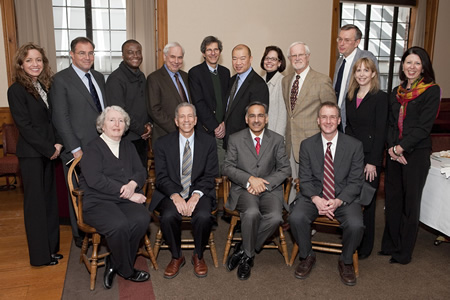
Photo: Executives from PepsiCo and Yale University gather to celebrate the opening of PepsiCo’s long-term research laboratory in New Haven, Connecticut, where the company will focus on the development of healthier products. The company also announced it will fund a M.D. - Ph.D. fellowship at Yale University School of Medicine.


A university’s brand - crucial in helping to attract students, staff and funding - is built on esteem. Times Higher Education’s first World Reputation Rankings reveal how academics view the strength of institutions’ teaching and research.
The results of the first Times Higher Education World Reputation Rankings is based on an invitation-only survey of more than 13,000 academics around the world.
The world regards an elite group of six universities as being head and shoulders above the rest. The rankings suggest that the top six - Harvard University; Massachusetts Institute of Technology; the University of Cambridge; the University of California, Berkeley; Stanford University and the University of Oxford - form a group of globally recognized “superbrands”.
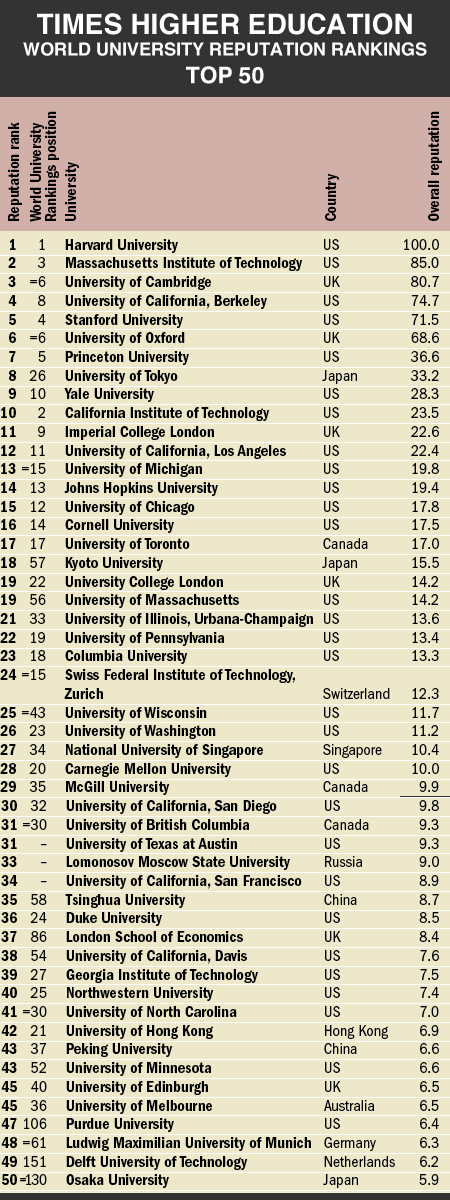

• Here is how John Morgan, a prominent Times Higher Education Writer, explores brand values in higher education:
“In an increasingly competitive higher education marketplace, branding has become big business for universities.
Institutions know that, in a sense, the degrees they confer are worth only as much as their brand. In nations where tuition fees are established, students “buy” a brand that will appeal to the right businesses when it is time to find a job; their choice of university will become part of their own “brand identity”. To attract the right calibre of academics, a university relies on its brand. And when those same academics submit a proposal for research funding or a paper to a leading journal, the brand of their institution may play a role in how their research is judged. The university’s brand becomes part of their own brand as an academic.
The notion of a university as a brand is one that many in higher education are comfortable with. But there are others, who warn that by focusing on branding, universities promote a view of higher education as a commodity rather than as a good in itself.
But if a university is a brand, a key factor determining its strength is reputation in teaching and research (brand and reputation are distinct but related). And the views of academics on university reputation are crucial, for they give an insight into which institutions are best placed to attract top talent, and also influence the views of students and parents.
The results of the first Times Higher Education World Reputation Rankings shed light on this increasingly important measure. The reputation ranking is drawn from a survey of more than 13,000 experienced academics worldwide, carried out by polling company Ipsos for data provider Thomson Reuters. The data informed the current Times Higher Education World University Rankings 2010-11, but are now published in isolation for the first time, revealing clear discrepancies between some institutions’ reputations and their overall ranking.
One notable surprise is the strong performance of Japanese institutions, with the University of Tokyo, Kyoto University and Osaka University all performing better in the World Reputation Rankings than they did in the World University Rankings.
Japan has five institutions in the reputation top 100, making it the best performer behind the US and the UK and producing a better score than major higher education nations such as Canada and Australia.
The US remains dominant in reputation, taking 45 of the places in the top 100.
The UK universities generally do better in the reputation rankings compared with their overall rankings.
China’s top-rated institution is Tsinghua University, in 35th place.”
• “India, despite having no representative in the top 200 of the World University Rankings, can boast of one in the reputation table — the Indian Institute of Science (in the 91-100 band),” John Morgan points out.
Reputation and brand are not the same thing. But Pat Freeland-Small, chief marketing officer at the University of Melbourne, says the former feeds the latter.
The world elite of universities, he says, do not need to advertise, “but in a way they are advertising. They are constantly communicating the quality of what they do through their people and what they naturally put out…It is their people, their quality of research - notions that come through the academic community - that advertise their international profile.”
|GlobalGiants.Com|
The Lioness.
A controversy prevailed among the beasts of the field as to which of the animals deserved the most credit for producing the greatest number of whelps at a birth. They rushed clamorously into the presence of the Lioness and demanded of her the settlement of the dispute. “And you,” they said, “how many sons have you at a birth?’ The Lioness laughed at them, and said: “Why! I have only one; but that one is altogether a thoroughbred Lion.”
The value is in the worth, not in the number.
— Aesop’s Fables. By Aesop (620-564 BC). Translated by George Fyler Townsend.
Edited & Posted by the Editor | 8:20 AM | View the original post

Photo: Roger Federer serves the ball during the Clash of Champions at Matthew Knight Arena on March 8, 2011 in Eugene, Oregon. (Photo © 2011 Steve Dykes/Getty Images).

Photo: Roger Federer returns the shot of Rafael Nadal during their match at the Clash of Champions at Matthew Knight Arena on March 8, 2011 in Eugene, Oregon. (Photo © 2011 Steve Dykes/Getty Images).

Photo: Rafael Nadal returns the shot of Roger Federer during their match at the Clash of Champions at Matthew Knight Arena on March 8, 2011 in Eugene, Oregon. (Photo © 2011 Steve Dykes/Getty Images).
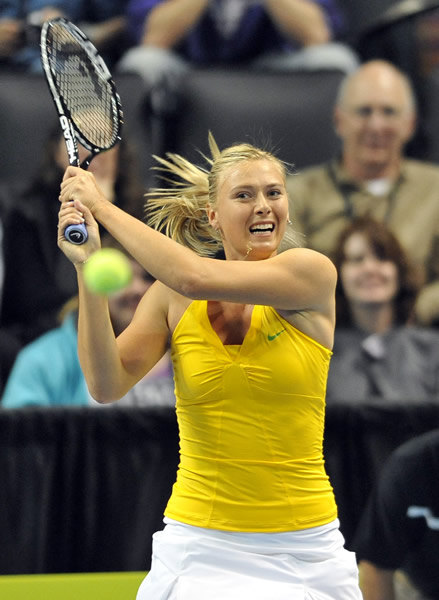
Photo: Maria Sharapova returns the shot of Victoria Azarenka during their match at the Clash of Champions at Matthew Knight Arena on March 8, 2011 in Eugene, Oregon. (Photo © 2011 Steve Dykes/Getty Images).

Photo: (L to R) Victoria Azarenka, Rafael Nadal, Roger Federer and Maria Sharapova play in a mixed doubles match as John McEnroe sits in the referees chair during the Clash of Champions at Matthew Knight Arena on March 8, 2011 in Eugene, Oregon. (Photo © 2011 Steve Dykes/Getty Images).

Photo: Roger Federer cheers on John McEnroe from the referees chair during the Clash of Champions at Matthew Knight Arena on March 8, 2011 in Eugene, Oregon. (Photo © 2011 Steve Dykes/Getty Images).
The University of Oregon’s sparkling new facility hosted four of the biggest stars from the professional tennis circuit, Roger Federer, Rafael Nadal, Maria Sharapova, and Victoria Azarenka, who appeared March 8 in the “NIKE Clash of the Champions.” The event featured Sharapova and Azarenka playing a singles set, followed by a mixed doubles set and then a men’s singles set between the top two players in the world, Nadal and Federer.
“The NIKE Clash of the Champions is one of the most unique events we could dream of hosting,” University of Oregon Director of Athletics Rob Mullens told the media gathered to cover the event.
|GlobalGiants.Com|
Edited & Posted by the Editor | 7:13 AM | View the original post
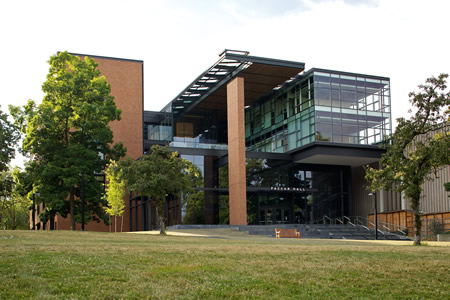
Photo: PACCAR Hall - University of Washington Foster School of Business, Seattle, Washington, USA.
Times Higher Education, London, has published its annual World University Rankings.
The Times Higher Education World University Rankings 2010-11 have been developed in concert with the new rankings data provider — Thomson Reuters.

“We believe we have created the gold standard in international university performance comparisons,” said Times Higher Education. “Our rankings of the top universities across the globe employ 13 separate performance indicators designed to capture the full range of university activities, from teaching to research to knowledge transfer. We are confident that the 2010-2011 world university rankings represent the most accurate picture of global higher education we have ever produced.”
|GlobalGiants.Com|
Edited & Posted by the Editor | 1:37 AM | View the original post
Global Research Benchmarking System for University Performance.
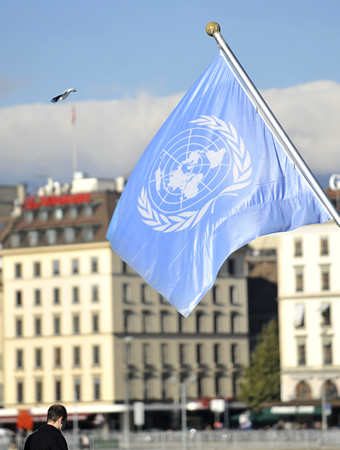
Photo: October 21, 2010. The United Nations flag flies on the Pont du Mont-Blanc, one of the bridges spanning the Rhone River in Geneva, Switzerland. UN Photo/Jean-Marc Ferre.
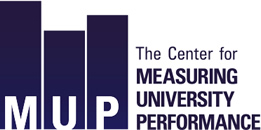
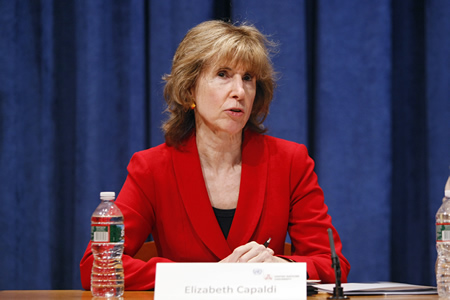
Photo: October 20, 2010. Elizabeth Capaldi, Provost of Arizona State University and Co-Editor at the Center for Measuring University Performance, briefs correspondents on a new alliance for measuring university performance called the Global Research Benchmarking System (GRBS). United Nations, New York. UN Photo/Paulo Filgueiras.
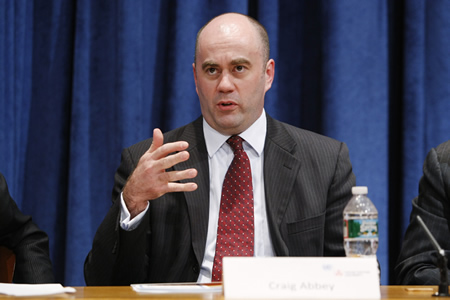
Photo: October 20, 2010. Craig Abbey, Assistant Vice President for Academic Planning and Budget of the State University of New York (SUNY) at Buffalo and Research Director of the Center for Measuring University Performance, briefs correspondents on a new alliance for measuring university performance called the Global Research Benchmarking System (GRBS), conceived by Mr. Abbey's Center and the UN University International Institute for Software Technology (UNU-IIST). United Nations, New York. UN Photo/Paulo Filgueiras.
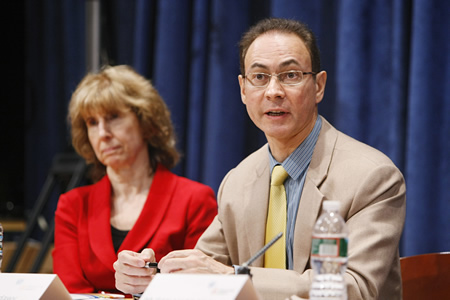
Photo: October 20, 2010. Peter Haddawy, Director of the United Nations University International Institute for Software Technology (UNU-IIST), briefs correspondents on a new alliance for measuring university performance called the Global Research Benchmarking System (GRBS). Pictured next to him is Elizabeth Capaldi, Provost of Arizona State University and Co-Editor at the Center. United Nations, New York. UN Photo/Paulo Filgueiras.

Photo: October 20, 2010. Jean-Marc Coicaud, Director of the United Nations University Office in New York, moderates the press conference launching a new alliance for measuring university performance called the Global Research Benchmarking System (GRBS). United Nations, New York. UN Photo/Paulo Filgueiras.
• Announcing the launch of the Global Research Benchmarking System (GRBS) at the UN Headquarters in New York, Jean-Marc Coicaud, Director of the United Nations University, said that university performance was comprised of complex and informative components and, as such, more than numbers defined their ranking.
The newly formed Global Alliance for Measuring University Performance would be developing the benchmarking system. The Alliance's collaborating partners include universities from around the world, the United States-based Center for Measuring University Performance, the United Nations University's International Institute for Software Technology (UNU-IIST) and Elsevier, one of the world's largest science publishers.
"As an academic and intellectual analysis project, all of the data would be publicly available, downloadable, and all the measures picked would ensure reliable and valid sources," said Elizabeth Capaldi, Provost of Arizona State University and Co-Editor at the Center for Measuring University Performance. "That would offer governing bodies and institutions information that would help them manage their operations more efficiently."
Peter Haddawy, Director of UNU-IIST, in an overview of the project, described the "broad vision of the Alliance", which, by providing objective data to universities, would help universities improve their performance in all areas, including education, community engagement, and research, as well as the societal impact of their activities. The Alliance's first project would be a benchmarking initiative on evaluating university research performance. That was "so important", he said, and should be done in a rigorous manner with full participation of the academic community.
• The benchmarking system overall was in stark contrast to existing university ranking systems, he said. The "richness of the contributions of the universities can't be represented by simple number in a lead table." Their contributions were much more complex and the new system would be designed to measure and represent that.
|GlobalGiants.Com|


Edited & Posted by the Editor | 3:24 AM | View the original post
Platform enables professors to design custom classroom content from library of nearly 50,000 sources and receive e-books within hours.


• McGraw-Hill Education says it has brought custom publishing into the 21st century with McGraw-Hill Create, an innovative platform that gives instructors unprecedented control over the customization of higher education classroom content.
"Gone are the days when professors had no choice in how to assemble content for classroom instruction, or had to wait weeks to receive a customized text," explains McGraw-Hill. "With Create, instructors can produce their own e-books or printed texts by selecting content from a vast library of resources - and receive a digital proof in under an hour."
"McGraw-Hill's Create custom publishing tool gives me the power to provide only the content that is relevant to how I teach," said Cliff Thompson, director of Theatre at Freed-Hardeman University. "I can pick and choose what makes the most sense for me and my class, which allows me to be a more effective teacher and cost-conscious for my students."

Increasingly, instructors are demanding content solutions that are tailored to the way they teach. Custom publishing is one of the fastest growing areas in the higher education market, rising by 25 percent on a yearly basis. But not all custom content is created equal: results of a recent McGraw-Hill survey show that instructors are looking for low-cost solutions that offer the ability to integrate content from multiple disciplines, allow them to seamlessly incorporate their own material, contain enhanced search functions and promise faster delivery times. It is with these needs in mind that it developed Create, says McGraw-Hill.
"McGraw-Hill Education is committed to putting the control back in professors' hands when it comes to producing course content," said Ed Stanford, president, McGraw-Hill Higher Education. "Through Create, we are empowering professors to customize content with a great degree of specificity and flexibility based on their course and syllabus, enhancing students' learning experiences while lowering the burden of cost."

At Create's core is a Google-like search engine functionality that enables professors to immediately pull from a wide range of quality content, including 4,000 McGraw-Hill textbooks, 5,500 articles, 11,000 literature, philosophy and humanities readings, and 25,000 business case studies from prominent providers such as the Harvard Business School. This powerful search tool allows professors to view content across the library, or limit their search by category, such as discipline or copyright year. Professors can also easily upload and incorporate self-produced content into their Create project.
Once a Create text has been fully customized, the instructor receives a digital review copy in under an hour or a print review copy in three to five days. Once a professor finalizes the book in Create, he or she can make it available for student purchase. Students may purchase Create e-books through the McGraw-Hill ebookstore or purchase Create print books through their campus bookstore.

To simplify and streamline the custom publishing process, an index and table of contents is automatically generated for each Create project. Create allows professors to easily save and archive projects to work on at another time or edit for future semesters. Professors can customize the look and feel of their Create project by selecting a cover design and adding their name and course information. Additionally, instructors can share Create projects with colleagues for review, making content customization a collaborative experience.
According to McGraw-Hill, instructors from two-year, four-year and career colleges and universities in the USA have used Create to customize their educational content since its launch in April. Twenty-eight percent of the instructors who have used Create elected to receive their review copies as e-books.
• Create, which can be used by higher education institutions worldwide, is currently available across all 75 disciplines for which McGraw-Hill supplies content.
Founded in 1888, The McGraw-Hill Companies is a global information and education company providing knowledge, insights and analysis in the financial, education and business information sectors through leading brands including Standard & Poor's, McGraw-Hill Education, Platts, and J.D. Power and Associates. The Corporation has more than 280 offices in 40 countries.
|GlobalGiants.Com|
Edited & Posted by the Editor | 2:00 AM | View the original post
Groups demonstrate distinctive 'collective intelligence' when facing difficult tasks.
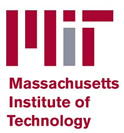


A new study co-authored by Carnegie Mellon University, MIT and Union College researchers documents the existence of collective intelligence among groups of people who cooperate well, showing that such intelligence extends beyond the cognitive abilities of the groups' individual members, and that the tendency to cooperate effectively is linked to the number of women in a group.
Many social scientists have long contended that the ability of individuals to fare well on diverse cognitive tasks demonstrates the existence of a measurable level of intelligence in each person. In a study to be published in an upcoming issue of the journal Science, the researchers applied a similar principle to small teams of people. They discovered that groups featuring the right kind of internal dynamics perform well on a wide range of assignments, a finding with potential applications for businesses and other organizations.
"We set out to test the hypothesis that groups, like individuals, have a consistent ability to perform across different kinds of tasks," says Anita Williams Woolley, the paper's lead author and an assistant professor at Carnegie Mellon's Tepper School of Business.
"Our hypothesis was confirmed," continues Thomas W. Malone, a co-author and Patrick J. McGovern Professor of Management at the MIT Sloan School of Management. "We found that there is a general effectiveness, a group collective intelligence, which predicts a group's performance in many situations."

That collective intelligence, the researchers believe, stems from how well the group works together. For instance, groups whose members had higher levels of "social sensitivity" were more collectively intelligent. "Social sensitivity has to do with how well group members perceive each other's emotions," says Christopher Chabris, a co-author and assistant professor of psychology at Union College in New York.
"Also, in groups where one person dominated, the group was less collectively intelligent than in groups where the conversational turns were more evenly distributed," adds Woolley. And teams containing more women demonstrated greater social sensitivity and in turn greater collective intelligence compared to teams containing fewer women.
To arrive at their conclusions, the researchers conducted studies at MIT's Center for Collective Intelligence and Carnegie Mellon, in which 699 people were placed in groups of two to five. The groups worked together on tasks that ranged from visual puzzles to negotiations, brainstorming, games and complex rule-based design assignments. The researchers concluded that a group's collective intelligence accounted for about 40 percent of the variation in performance on this wide range of tasks.
Moreover, the researchers found that the performance of groups was not primarily due to the individual abilities of the group's members. For instance, the average and maximum intelligence of individual group members did not significantly predict the performance of their groups overall.
Only when analyzing the data did the co-authors suspect that the number of women in a group had significant predictive power. "We didn't design this study to focus on the gender effect," Malone says. "That was a surprise to us." However, further analysis revealed that the effect seemed to be explained by the higher social sensitivity exhibited by females, on average. "So having group members with higher social sensitivity is better regardless of whether they are male or female," Woolley explains.

Malone believes the study applies to many kinds of organizations. "Imagine if you could give a one-hour test to a top management team or a product development team that would allow you to predict how flexibly that group of people would respond to a wide range of problems that might arise," he says. "That would be a pretty interesting application. We also think it's possible to improve the intelligence of a group by changing the members of a group, teaching them better ways of interacting or giving them better electronic collaboration tools."
• Woolley and Malone say they and their co-authors "definitely intend to continue research on this topic," including studies on the ways groups interact online, and they are "considering further studies on the gender question."
Still, they believe their research has already identified a general principle indicating how the whole adds up to something more than the sum of its parts. As Woolley explains, "It really calls into question our whole notion of what intelligence is. What individuals can do all by themselves is becoming less important; what matters more is what they can do with others and by using technology."
"Having a bunch of smart people in a group doesn't necessarily make the group smart," concludes Malone.
In addition to Woolley, Malone and Chabris, the other co-authors were Alexander Pentland, the Toshiba Professor of Media Arts & Science at the MIT Media Lab; and Nada Hashmi, a doctoral candidate at MIT Sloan.
|GlobalGiants.Com|
"I used to say of Napoleon that his presence on the field made the difference of forty thousand men."
-- Duke of Wellington.
"There be four things which are little upon the earth, but they are exceeding wise:
The ants are a people not strong, yet they prepare their meat in the summer;
The conies are but a feeble folk, yet make they their houses in the rocks;
The locusts have no king, yet go they forth all of them by bands;
The spider taketh hold with her hands, and is in kings' palaces."
-- Proverbs of Solomon 30:24-28.
Edited & Posted by the Editor | 2:44 AM | View the original post
3rd annual edition includes 400 institutions worldwide.


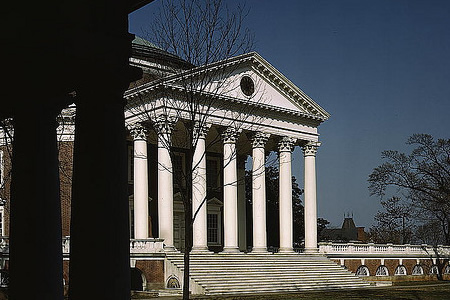
Photo: Rotunda of the University of Virginia, Charlottesville, VA, USA (April 1943). Photographer: John Collier. Repository: Library of Congress Prints and Photographs Division Washington, D.C. 20540 USA.
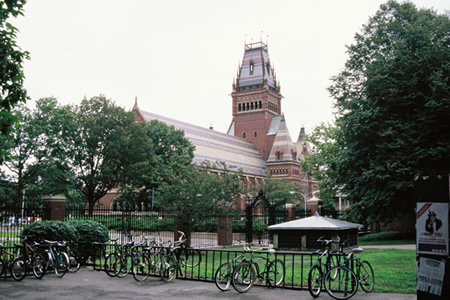
Photo: Harvard University. Bicycles outside the campus entrance. © UNESCO/Ariane Bailey.

Photo: The University of Hong Kong, Main Campus.
• U.S. News Media Group today released the third annual edition of the World's Best Universities Rankings.
World's Best Universities rankings, updated annually by U.S. News, are based on the 2010 QS World University Rankings, developed by QS Quacquarelli Symonds, one of the world's leading resources for careers and education.
Following a different methodology and ranking data than the well-known U.S. News Best Colleges rankings, the World's Best Universities rates universities on factors such as the proportion of international faculty and the proportion of international students.

Photo: Radcliffe Camera, Oxford University, Oxford, England.
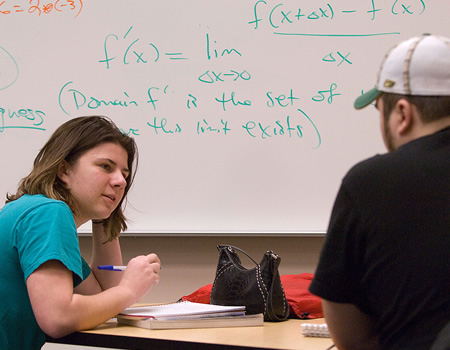
Photo: Buffalo State College is offering New York State's first and so far only professional science master's (P.S.M.) degree program in applied mathematics and computation. (Buffalo State College/Bruce A. Fox)
"There's a growing interest among prospective students to attend institutions abroad," said U.S. News Media Group Editor Brian Kelly. "The World's Best Universities rankings help students compare and select the best schools worldwide. In addition, the rankings enable our readers to understand more fully how well American institutions perform when compared with other institutions of higher learning around the world."
"The world is rapidly changing," said Director of Data Research Bob Morse. "More students and faculty are eager to explore the higher education options that exist outside their countries. Universities worldwide are competing for the best and brightest students, the most highly recognized research faculty, and coveted research dollars. And more universities are seeking world-class status to become players on the global academic stage."
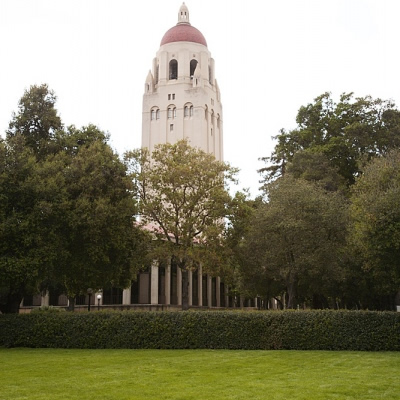
Photo: Stanford University Campus.
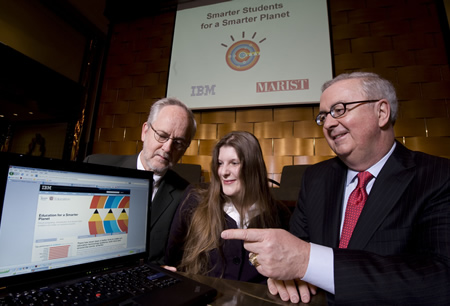
Photo: (l. to r.) Dean Roger Norton, Marist College, with student Carol Hagedorn, and Jim Corgel, general manager of IBM's academic initiative. IBM has announced an academic cloud that will help colleges integrate technology into their curricula.
Using an in-depth methodology, the World's Best Universities rankings is one of the most comprehensive of its kind, and includes the following rankings: Top 400 Universities Worldwide, Top 50 Asian Universities, Top 50 British and European Universities, Top 20 Canadian Universities, Top 20 Australian and New Zealand Universities and Top 10 Latin American Universities. The listing also includes the Top 100 global rankings in the fields of arts and humanities; engineering and IT; life sciences and biomedicine; natural and physical sciences; and social sciences.

To determine the 2010 rankings, six distinct indicators of excellence were evaluated, including: Academic Peer Review, Employer Review, Student-to-Faculty Ratio, Proportion of International Faculty, Proportion of International Students, and Citations per Faculty Member.
• Download the 2010 World University Rankings
|GlobalGiants.Com|
Edited & Posted by the Editor | 12:18 AM | View the original post


Photo: A Building at the Harvard University Campus.
• U.S. News Media Group has released the 2011 edition of Best Colleges, which includes rankings of more than 1,400 schools in the USA.
Harvard University is ranked No. 1 among Best National Universities, while Williams College tops the list of Best National Liberal Arts Colleges. The exclusive rankings, available online today at USNews.com, will also be published in the September issue of U.S. News & World Report, on newsstands starting August 31.
Over the past two decades, the U.S. News college rankings, which group schools based on categories created by the Carnegie Foundation for the Advancement of Teaching, has grown to be a comprehensive research tool for students and parents considering higher education opportunities.
"As soaring college costs make the decision more complicated than ever, U.S. News strives to provide students and families with the best information to help guide them through this process," said U.S. News & World Report Editor Brian Kelly. "This year the challenge comes down to finding the right college--at a cost you can afford. The 2011 edition includes specialty rankings, online guides for admission and paying for college advice to help navigate your search."

• Top 5 U.S. National Universities
1. Harvard University (MA)
2. Princeton University (NJ)
3. Yale University (CT)
4. Columbia University (NY)
5. Stanford University (CA)
• Top 5 U.S. National Liberal Arts Colleges
1. Williams College (MA)
2. Amherst College (MA)
3. Swarthmore College (PA)
4. Middlebury College (VT)
4. Wellesley College (MA)
The 2011 Best Colleges feature the established rankings of the Best National Universities and Best National Liberal Arts Colleges, while also including rankings of A+ Schools for B Students, Great Schools at Great Prices, and Up-and-Coming Schools, among others.
• The 2011 Best Colleges package provides an examination of how more than 1,400 accredited four-year schools compare on a set of up to 16 widely accepted indicators of excellence.
Among the many factors weighed in determining the rankings, the key measures of quality are: peer assessment, graduation and retention rates, faculty resources, student selectivity, financial resources, alumni giving, and for National Universities and National Liberal Art Colleges "graduation rate performance" and high school counselor ratings of colleges.
According to U.S. News, it has made some significant changes to the 2011 Best Colleges' ranking methodology and presentation.

Photo: Free "green bikes" parked at Green Mountain College in Poultney, Vermont.
• Meanwhile, responding to some dissatisfaction with traditional college rankings and the growing demand for universities to refocus on undergraduate education and value, the American Council of Trustees and Alumni (ACTA) unveiled today its 2011 college evaluations on WhatWillTheyLearn.com.
According to ACTA, its rankings grade more than 700 universities on education -- not reputation.
The free website evaluates more than 700 colleges and universities based on their general education curricula: the core courses aimed at providing a strong foundation of knowledge.
The website assigns each institution a grade from "A" to "F" based on how many of the following seven core subjects it requires: Composition, Mathematics, Science, Economics, Foreign Language, Literature, and American Government or History.
"The crisis in higher education is about more than money - it's about what we are paying for. And when it comes to ensuring graduates possess the basic skills and knowledge they need to succeed, universities are shortchanging students," said ACTA president Anne D. Neal, speaking at the National Press Club.
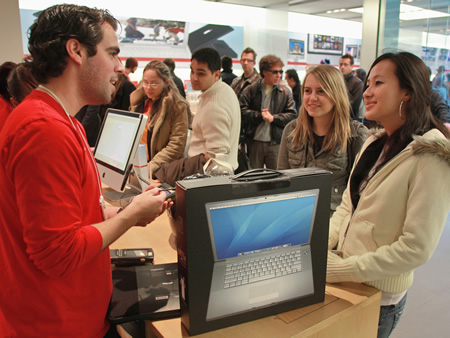
Photo: College student Stephanie Sequeira, right, buys herself a MacBook Pro while holiday shopping with her friend, Gillian Walsworth, center, at the Apple Store San Francisco. (Foto © Apple)
Key ACTA Findings:
• Colleges and universities have by and large abandoned a coherent content-rich general education curriculum, thereby allowing students to graduate with important gaps in their knowledge:
• More than 60% of all institutions receive a "C" or worse for requiring 3 or fewer subjects.
• Nearly 40% don't require college-level mathematics.
• Less than 5% of colleges and universities require economics.
• Less than a third require intermediate-level foreign language, a broad survey class in American government or history, or literature.

• ACTA concludes that universities have on the whole abdicated their responsibility to direct students to the most important subjects they will need for success after graduation, while continuing to charge a premium. A published report aggregating the data for the more than 700 schools will be sent to trustees of the institutions covered, as well as to the Governors and educational policymakers in the states.
• The American Council of Trustees and Alumni (ACTA) is an independent non-profit dedicated to academic freedom, academic quality, and accountability, while the U.S. News Media Group is a multi-platform publisher of news analysis, research and rankings which includes the monthly U.S. News & World Report magazine.
|GlobalGiants.Com|
Edited & Posted by the Editor | 6:53 AM | View the original post
• Thomson Reuters Academic Reputation Survey Shows High Level of Engagement From Global Scholarly Community.
• Nearly one third of responses came from Asia.

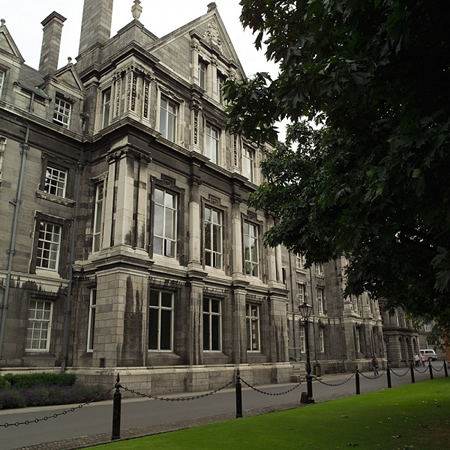
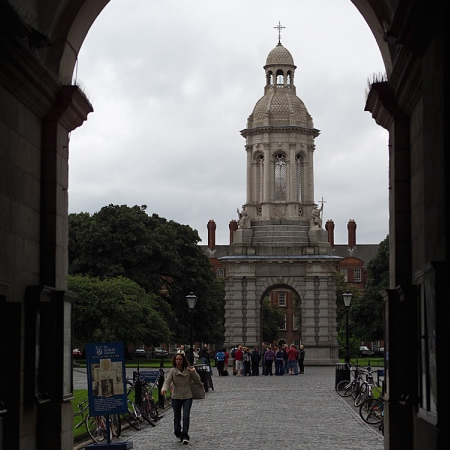
Photos: Trinity College (Dublin, Ireland).
Thomson Reuters has announced preliminary results of its Academic Reputation Survey. The survey received responses from professional scholars from every corner of the world.
Thousands of responses were received in six subject areas: engineering and technology; physical sciences; life sciences; clinical, preclinical and health; social sciences; and arts and humanities. Nearly one third of these responses came from Asia, including a strong representation from China and Japan.
"We're particularly pleased with the number of responses from the Asia Pacific region," said Jonathan Adams, director of research evaluation at Thomson Reuters. "As other surveys have been criticized for over-representing North America and Europe, we took particular care to better balance regional representation."

To help control for language and translation bias the Academic Reputation Survey was offered in eight languages: Japanese, Simplified Chinese, Spanish, French, German, Brazilian Portuguese, European Portuguese and English.
"Interestingly, country affiliation did not always predict language usage," Adams added. "For example, many United States-based participants took the survey in Chinese -- illustrating a highly mobile global academic community."

The Academic Reputation Survey is part of the Thomson Reuters Global Institutional Profiles Project. The initiative will create data-driven profiles of globally significant research institutions/universities -- combining reputation feedback, scholarly outputs, citation patterns, funding levels, and faculty characteristics across disciplines in one comprehensive database. The data can be packaged and analyzed to different specifications, giving organizations custom information for evaluating and benchmarking their performance and supporting efforts to secure research funding.
• The data gathered for the Global Institutional Profiles Project will also help inform the Times Higher Education's influential World University Rankings.
• Thomson Reuters is analyzing the Academic Reputation Survey and would soon release the detailed results.
|GlobalGiants.Com|
Edited & Posted by the Editor | 6:46 AM | View the original post
• QS World University Rankings now an iPhone App.
• Top 500 Universities in the World can be contacted at the Touch of a Button.
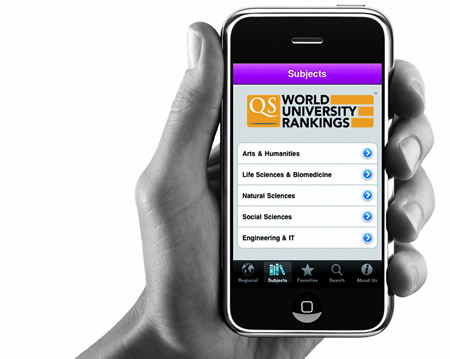
The world's most popular university ranking is now accessible to its diverse users via an innovative new iPhone Application. The QS World University Rankings Application designed for students, parents and ranking fanatics, allows users to conduct their own study destination research by providing global, regional and subject-based rankings as well as profiles and contact details of 500 of the world's top universities.

QS World University Rankings can be viewed and interpreted in three different ways - globally, regionally and by subject area. Users who have reviewed the App said it is, "Very thorough and organized", and also "Great to be able to see info about the universities I'm interested in all in one place".
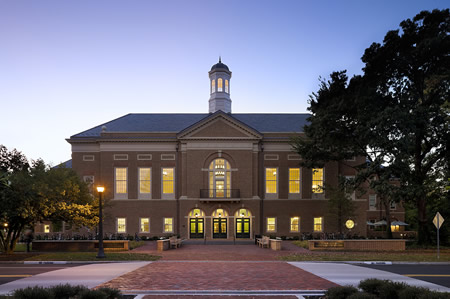
The iPhone App is the first of a series of initiatives to be launched by QS in the lead up to the release of the 2010 QS World University Rankings; it is free to download on iTunes.
|GlobalGiants.Com|
Edited & Posted by the Editor | 1:59 AM | View the original post
University of Hong Kong Tops Table Ahead of Hong Kong University of Science and Technology and National University of Singapore.


• QS Quacquarelli Symonds, the research and information specialists behind the QS World University Rankings™, have launched the new research round for the 2010 rankings, in association with partners including US News & World Report and Scopus, the Elsevier database that supplies bibliometric data.
Meanwhile, the excellence of Asia's universities is showcased in the 2010 QS Asian University Rankings, published today. With 11 countries represented in the top 200, highlights of the research include the continued dominance of Japan's universities and the success of Hong Kong's increasingly internationalized institutions, which take three out of the top four places.


Japanese universities occupy five of the top ten places in this year's table. Government-led investment, most recently through the 'Global 30' program, has helped drive up standards by attracting high-quality international students and staff.
Despite scoring highly in the academic and employer surveys, China's top universities, led by The University of Peking (12) and Tsinghua University (16), are again out-performed by their Hong Kong counterparts. Hong Kong's more international university culture is reflected in the international student and faculty measures, for which four of them achieve the maximum score.

Photo: University of Mumbai Clock Tower, Mumbai, India. The University of Mumbai (earlier known as University of Bombay) was established in 1857.
Strength in academic peer recognition helped 15 South Korean universities and seven Indian Institutes of Technology appear in the Asian top 100.
QS Managing Director, Nunzio Quacquarelli says, "The delivery of high-quality research, excellent employer networks and world-class facilities mean many of these top 200 Asian universities are playing an increasingly important role within the global knowledge economy."
Source: QS Quacquarelli Symonds Ltd.
|GlobalGiants.Com|
Edited & Posted by the Editor | 3:53 AM | View the original post
 |
 |
